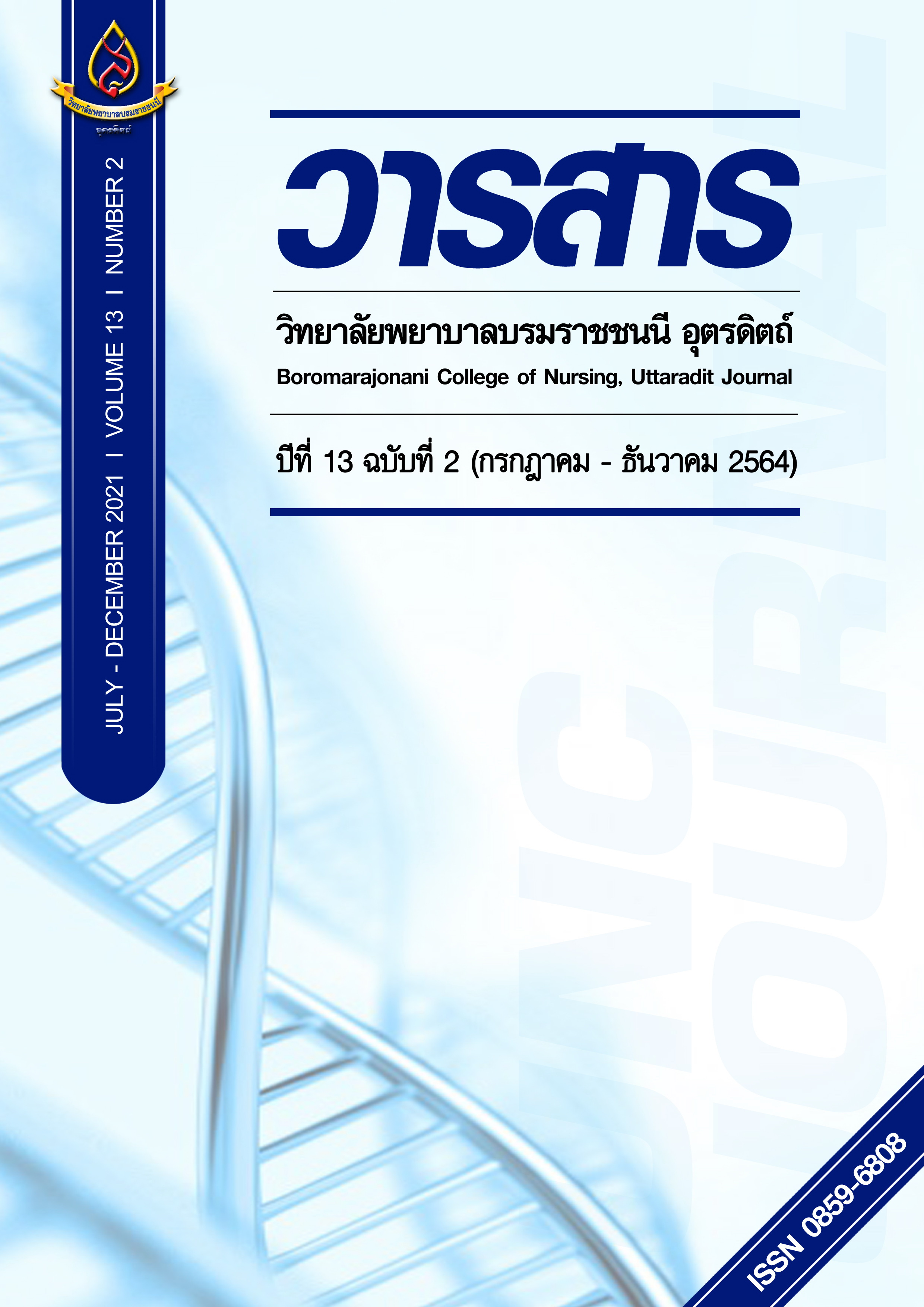สมรรถนะที่พึงประสงค์ตามการรับรู้ของพยาบาลวิชาชีพด้านวัฒนธรรมความปลอดภัย ของผู้ป่วยและพยาบาลวิชาชีพห้องผ่าตัด โรงพยาบาลระดับตติยภูมิ ในเขตภาคเหนือ สังกัดกระทรวงสาธารณสุข
Main Article Content
บทคัดย่อ
การวิจัยเชิงพรรณนาครั้งนี้มีวัตถุประสงค์เพื่อศึกษา 1) สมรรถนะที่พึงประสงค์ตามการรับรู้ของพยาบาลวิชาชีพด้านวัฒนธรรมความปลอดภัยของผู้ป่วยและพยาบาลวิชาชีพห้องผ่าตัด ในโรงพยาบาลระดับตติยภูมิ ในเขตภาคเหนือ สังกัดกระทรวงสาธารณสุข 2) องค์ประกอบของสมรรถนะที่พึงประสงค์ตามการรับรู้ของพยาบาลวิชาชีพด้านวัฒนธรรมความปลอดภัยของผู้ป่วยและพยาบาลวิชาชีพห้องผ่าตัด ในโรงพยาบาลระดับตติยภูมิ ในเขตภาคเหนือ สังกัดกระทรวงสาธารณสุข กลุ่มตัวอย่างเป็นพยาบาลวิชาชีพที่ปฏิบัติงานในห้องผ่าตัด 5 โรงพยาบาล จำนวน 300 คน เครื่องมือที่ใช้เป็นแบบสอบถาม ประกอบด้วยแบบสอบถามข้อมูลส่วนบุคคล แบบสอบถามสมรรถนะที่พึงประสงค์ตามการรับรู้ของพยาบาลวิชาชีพด้านวัฒนธรรมความปลอดภัยของผู้ป่วยและพยาบาลวิชาชีพห้องผ่าตัด ในโรงพยาบาลระดับตติยภูมิ ในเขตภาคเหนือ สังกัดกระทรวงสาธารณสุข วิเคราะห์ข้อมูลโดยใช้โปรแกรมสำเร็จรูปหาค่าร้อยละ ค่าเฉลี่ย ค่าเบี่ยงเบนมาตรฐาน และใช้การวิเคราะห์องค์ประกอบเชิงสำรวจ (Exploratory Factors Analysis: EFA) ด้วยวิธีการสกัดปัจจัย Principle Component Analysis (PCA) ใช้การหมุนแกนด้วยวิธี Orthogonal แบบ Varimax
ผลการวิจัย พบว่า องค์ประกอบของสมรรถนะที่พึงประสงค์ตามการรับรู้ของพยาบาลวิชาชีพด้านวัฒนธรรมความปลอดภัยของผู้ป่วยและพยาบาลวิชาชีพห้องผ่าตัด ในโรงพยาบาลระดับตติยภูมิ ในเขตภาคเหนือ สังกัดกระทรวงสาธารณสุข มีทั้งหมด 7 องค์ประกอบ ดังนี้ องค์ประกอบที่ 1 ด้านศักยภาพในการบริหารจัดการ องค์ประกอบที่ 2 ด้านการป้องกันการบาดเจ็บทางร่างกายของผู้ป่วย องค์ประกอบที่ 3 ด้านการจัดการข้อมูลของผู้ป่วยและพยาบาล องค์ประกอบที่ 4 ด้านการสนับสนุนองค์การ องค์ประกอบที่ 5 ด้านการประยุกต์ใช้ความรู้ องค์ประกอบที่ 6 ด้านทักษะการปฏิบัติการพยาบาลห้องผ่าตัดและ องค์ประกอบที่ 7 ด้านการติดตามและควบคุมกำกับวิชาชีพ
Article Details
บทความหรือข้อคิดเห็นใดใดที่ปรากฏในวารสารวิจัยการพยาบาลและวิทยาศาสตร์สุขภาพ เป็นวรรณกรรมของผู้เขียน ซึ่งบรรณาธิการหรือสมาคมศิษย์เก่า ไม่จำเป็นต้องเห็นด้วย และบทความที่ได้รับการตีพิมพ์เผยแพร่ถือเป็นลิขสิทธิ์ของวารสารวิจัยการพยาบาลและวิทยาศาสตร์สุขภาพ
เอกสารอ้างอิง
Clark OL. (2006). Compliance with safety practices among nurses: exploring the link between organizational safety climate, role definitions, and safe work practice. [Doctoral dissertation:Doctor of Philosophy:]. Ohio U.S. States: The Graduate College of Bowling Green State University.
Jiraphat, V. & K. (2007). Patient safety management: concepts, process and clinical safety Guidelines. Bangkok: Dansuthakarn Printing. (in Thai).
Samittikai, C. (2009). Training of Personal in the Organization (4th ed). Bangkok: Chulalongkorn University. (In Thai)
Sanprasan, P. & Thongkumrod, R. (2012). Development of quality management in system public health. (Master’s thesis). Bangkok: Sukhothai Thammathirat University). (in Thai).
Thailand Nursing and Midwifery council. (2015). Professional nursing and midwifery act. Retrieved (2018, September 11) from www.tnc.or.th. (in Thai).
Unipun, J. (2007). Personal and motivation factors , environment with practice of self-development activities of nurses. Journal of Demography, 23(1), 31-47. (in Thai).
World Health Organization. (2016). Patient safety: Data and statistics. Retrieved (2019, May 27). from http://www.euro.who.int/en/health-topics/Health-
systems/patient-safety/data-and-statistics.


